1. Mammoth Cave National Park

Mammoth Cave National Park is a UNESCO World Heritage Site and an International Biosphere Reserve with rolling hills, deep river valleys, and the world's longest known cave system. It is home to thousands of years of human history and rich diversity of plant and animal life, earning it the titles of UNESCO World Heritage Site and International Biosphere Reserve. It's the world's longest cave system, with a length of 412 miles, or the distance between Boston and Baltimore, laid out by explorers. New routes are continuously being discovered, and no end in sight, according to explorers. There are 130 different animal species in the cave, as well as thousands of years of human history.
The cave isn't the only attraction in the park, though. Make use of the park's numerous pathways and waterways to explore the Green and Nolin River valleys. Summer is when the park is busiest. There are fewer tours available in the winter, but there are significantly fewer people.
The 2.25-hour Extended Historic Tour is a great way to start the day. Expect to walk 2 kilometers and climb 540 steps. The Mammoth Cave Accessible Tour is entirely accessible and has no stairs, while the Wild Cave Tour is tough and takes all day. Don't forget to bring a jacket because the cave is kept at 54 degrees Fahrenheit.
Join the 2-hour Domes and Dripstones Tour in the afternoon for a look at the cave's most impressive formations. The journey begins in a sinkhole and winds its way through massive domes to Frozen Niagara.
Best time to visit: Winter and summer are the operating seasons at Mammoth Cave. Because summer is the peak season for tourists, there are more tours available. The winter months are more peaceful, fewer tours available, but there are also fewer visitors, making this the perfect time to visit.
Distance and driving time from Nashville: 95 miles, 1 hour and 28-minute drive from Nashville
2. Great Smoky Mountains
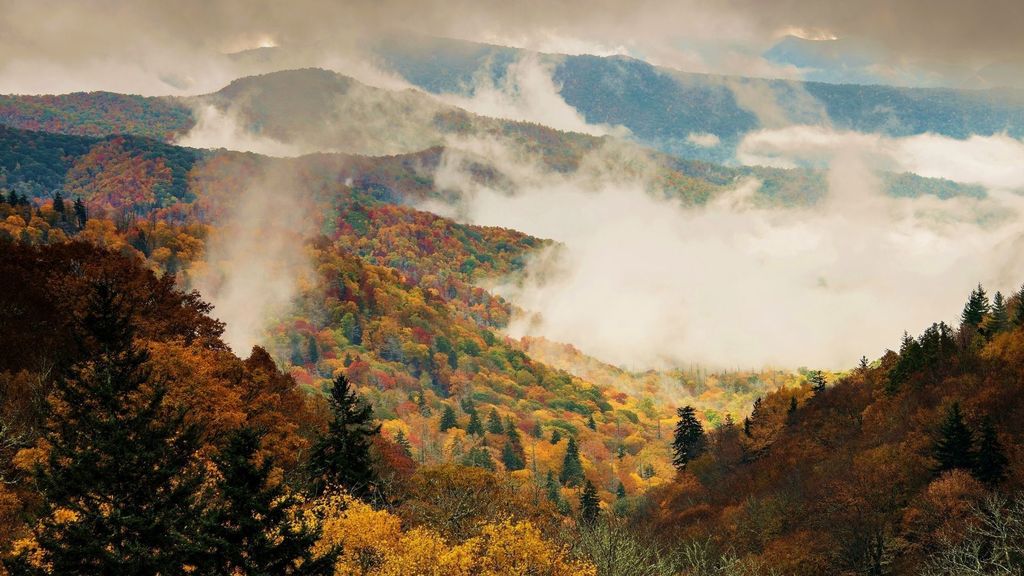
The Great Smoky Mountains National Park is a mountain range in the southeast United States that rises along the Tennessee–North Carolina boundary and is noted for its ecological richness, historic mountain magnificence, and outstanding relics of Southern Appalachian mountain culture. It is home to more than 1,400 species of flowering plants, including mountain magnolias, wild azaleas, mountain laurels, orchids, and rhododendrons, and is a mix of deciduous and conifer woods, making it a perfect day trip from Nashville.
Hikers and mountain bikers come here in the spring, summer, and fall, and skiers in the winter, to enjoy the mountains. This park has crisscrossed with more than 900 kilometers of hiking routes. Many visitors come for the excellent fly-fishing, which is usually regarded as among the best in the country.
There are several good visitor centers that provide guides and easy access to the most spectacular sites. There are numerous campsites throughout the park, as well as cabin rentals in and surrounding this area of remarkable natural beauty.
Clingmans Dome, at 6,643 feet, is the highest peak in Tennessee in the Great Smoky Mountains National Park and is only a one-hour drive from downtown Gatlinburg.
The Sugarlands, a valley called for the area's once-dominant sugar maple trees and a popular day trip destination from Gatlinburg, is one of the most beautiful portions of the Smoky Mountains. The area runs from the Roaring Fork River in the east to the Sugarland Mountain slopes in the west and is dominated by the 5,000-foot Mount le Conte. Hiking is one of the top things to do in Gatlinburg in October when the leaves are turning color, and Sugarlands is especially popular with hikers.
The always-bustling town of Gatlinburg, which serves as the entrance to the Great Smoky Mountains National Park, has everything visitors need after a long day of exploring the surrounding area. Parkway, the major highway, is the hub of activity, with as many mom-and-pop shops and restaurants as it has big-name hotel and motel brands.
Best time to visit: Summer (June, July, and August) and fall are the finest months to explore the Great Smoky Mountains. The month of July is the busiest of the summer season, while the weekends in October attract visitors looking for autumn foliage.
Distance and driving time from Nashville: 204 miles, 3 hour and 11-minute drive from Nashville
3. Cumberland Caverns
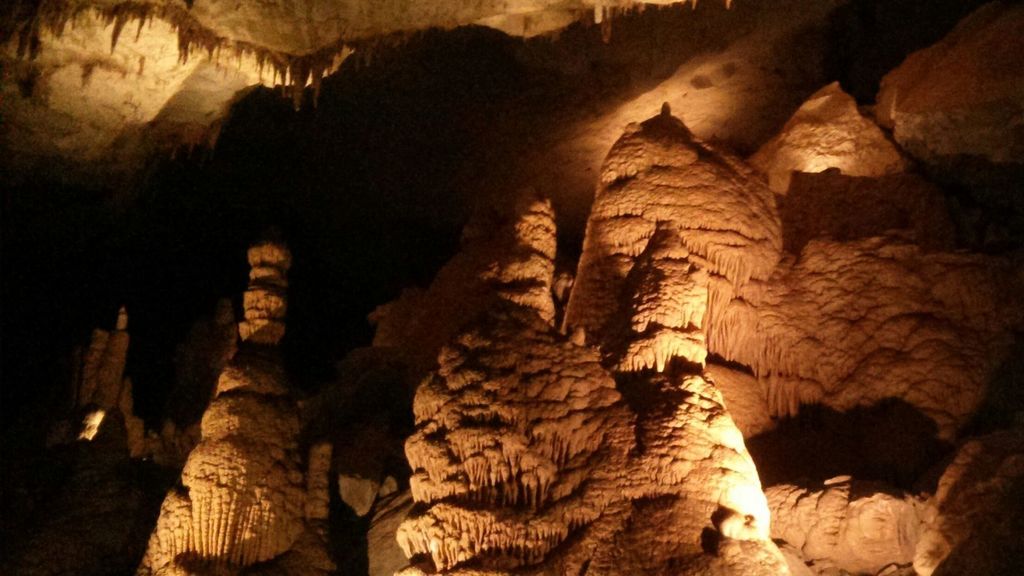
If you're planning for a day excursion from Nashville, Cumberland Caverns should be on your list.
The Cumberland Caverns firm claims to be Tennessee's largest show cave and offers year-round commercial tours of the cave.
A daytime walking tour, spelunking tours, overnight excursions, and educational field trips are among the tours available. Every tour includes a visit to the historic 1812 saltpeter mine and "God of the Mountain," an innovative underground light and sound display.
The cave features some of Eastern America's largest underground rooms and stunning structures, including waterfalls, glistening pools, and even a 3/4-ton chandelier.
Bluegrass Underground, a monthly music event held in the cave's Volcano Room, used to be held at Cumberland Caverns. The event has since been turned into a nationally syndicated program that airs on PBS. Cumberland Caverns Live now occupies the Volcano Room, which showcases a variety of events and live music, including Sister Hazel, Kip Moore, and Deer Tick (band).
Best time to visit: The cave maintains a constant temperature of 56 degrees Fahrenheit year-round, with a humidity level of 99 percent. This makes it a great place to visit at any time of year, but it can get crowded in the summer.
Distance and driving time from Nashville: 84 miles, 1 hour and 39-minute drive from Nashville
4. US Space and Rocket Museum
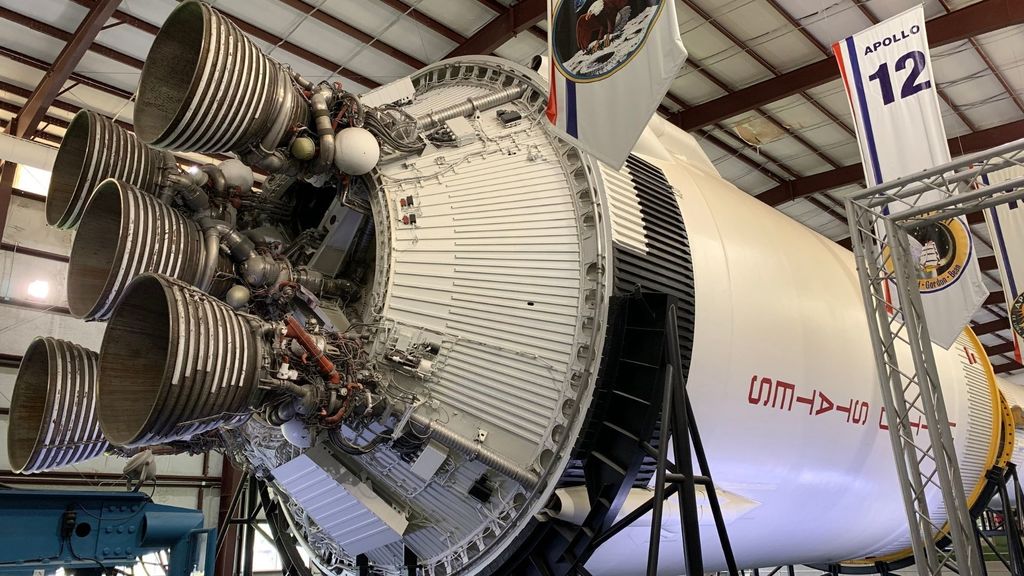
The US Space & Rocket Center in Huntsville is a museum that showcases rockets, relics, and achievements from the US space program. It opened its doors in 1970 as one of the world's major space museums. Original Apollo Program gear is on display, as with interactive science exhibits, tours of the Space Shuttle, and displays of Army rocketry and aircraft.
Over 1,500 permanent space exploration and rocketry artifacts, as well as a variety of related exhibitions, are housed at the Center. The center is located close to the Huntsville Botanical Garden on Redstone Arsenal land.
Examine the Moon Rock, which is 3.16 billion years old, constructed of hardened lava, weighs 15.9 ounces, and is priceless. The Apollo 12 Command Module brought this sample back from the moon in November 1969, and it is now on exhibit in Huntsville.
Hold your breath for the 10-minute virtual reality display that takes you back to those pivotal days in July 1969. Viewers are taken on a journey that transformed the world through historical media and realistic recreations. The Apollo 11 Virtual Reality experience is a $12 ($10 for members) add-on to a regular museum admission ticket.
The G Force, one of the Rocket Center's all-time hits, continues to draw a long line of visitors. It's essentially a supersized centrifuge that simulates astronaut training by generating three times the force of gravity, or 3 Gs. Can’t. Lift.
Exhibit Saturn V's "brain," which resembles a scene from a time travel film. The Saturn V's Instrument Unit, or IU, was a part of the rocket's assembly that included computers and other gadgetry between the Apollo spacecraft and the Saturn V third stage. To precisely manage stage firing and rocket direction, the IU could sense altitude, acceleration, velocity, and location.5. Rock Island State Park.
The U.S. Space and Rocket Center is $25 general admission for adults, which includes children aged 13 and above. Children aged 5-12 pay $17, and children 4 and under are free.
Best time to visit: The U.S. Space and Rocket Center is a perfect place to visit at any time of year, but it can get crowded in the summer.
Distance and driving time from Nashville: 112 miles, 1 hour and 52-minute drive from Nashville
5. Diamond Caverns
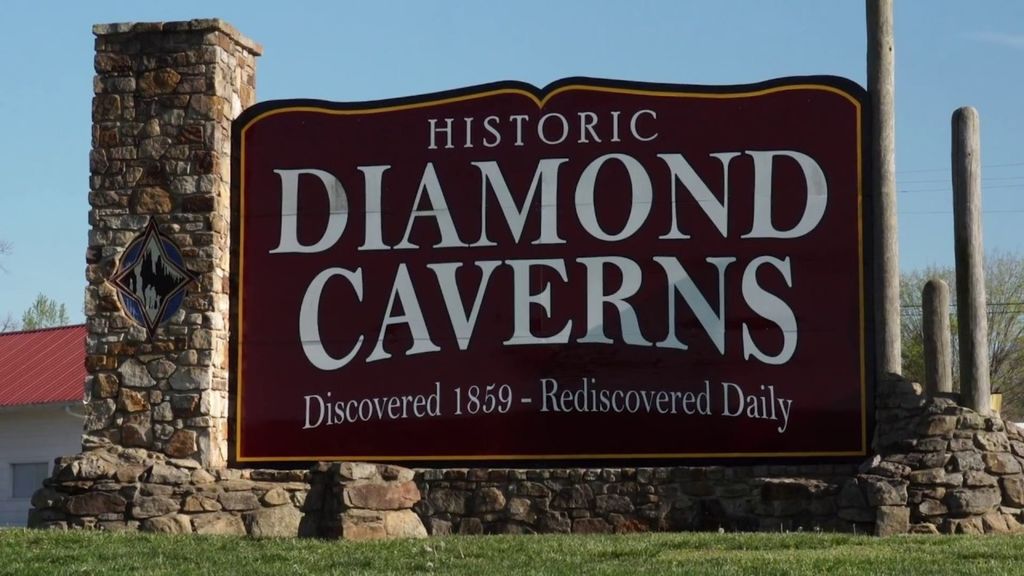
Diamond Caverns was founded in 1859 and immediately became one of the area's top popular tourist attractions due to its intricate, shiny calcite deposits, which earned the cave its name since they gleamed like jewels. Diamond Caverns are known for its exquisite stone draperies bordering the cave hallways in cascades of colorful calcite, which is now well-lit by state-of-the-art lighting.
Diamond Caverns is open all year and offers first-come, first-served guided tours on a daily basis. The trip is a half-mile long and features stunning limestone rock formations and calcite drapery deposits. The cave is illuminated with cutting-edge white lights. Because the tour includes over 300 steps, it's best to wear shoes that are both comfortable and supportive.
In addition, Diamond Caverns has a sluice mine where kids may pan for gemstones. Mammoth Cave National Park is close to Diamond Caverns.
Best time to visit: This makes it a great place to visit at any time of year, but it can get crowded in the summer.
Distance and driving time from Nashville: 88 miles, 1 hour and 21-minute drive from Nashville
6. Knoxville
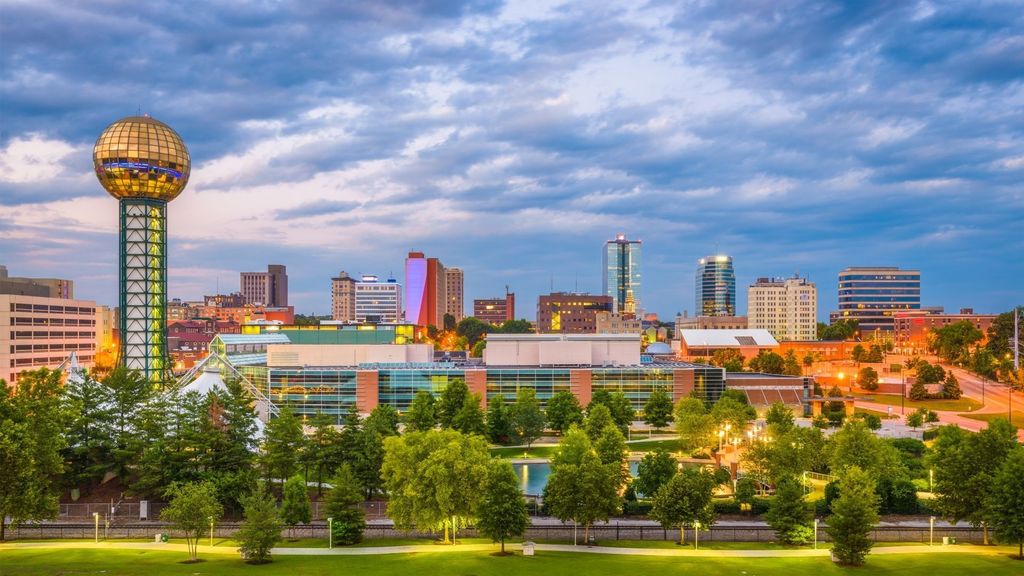
The great city of Knoxville is nestled in the state of Tennessee where it is also blessed by an abundance of beautiful surrounding landmarks like the Tennessee River, the gorgeous Great Smoky Mountains, and the equally breathtaking Great Smoky Mountains National Park.
With gems like museums, history centers, parks, fairs, and theaters, as well as a variety of historical structures and monuments, a trip to Knoxville can teach you everything you need to know about the state's history and culture.
For nature lovers, Ijams Nature Center is one of the top things to do in Knoxville, and it's also absolutely free to visit. There are almost 10 miles of trails to hike across the huge preserve, 104 acres of an abandoned quarry to discover, and plenty of water activity alternatives to hiring in the summer, such as canoes and kayaks.
There are also educational displays about various birds in the Ijams Nature Center, as well as Navitat Canopy Adventures, an exciting zipline adventure park within it.
World's Fair Park, the location of the 1982 World's Fair, is one of Knoxville's major attractions and a great spot to spend time outdoors. Beautiful lawns, walkways, and water features have been added to the park's renovation.
Zoo Knoxville is home to over 900 different animals from all over the world, and there are so many things to see that it is an excellent place to take your children this weekend. The zoo has won prizes for its efforts to save red pandas, and it also houses a variety of other unusual and exotic animals, such as Komodo dragons.
When it was opened in 1928, the Tennessee Theater was dubbed a "movie palace." Since then, its iconic nature has only grown, making it one of the top entertainment and architecture destinations in the world! The structure is also listed on the National Register of Historic Places. The theater is built with spectacular and beautiful components that add to its magnificent character, and it has a Spanish-Moorish design.
Best time to visit: The best time to visit Knoxville is March through June and September through November.
Distance and driving time from Nashville: 180 miles, 2 hour and 51-minute drive from Nashville
7. Rock Island State Park
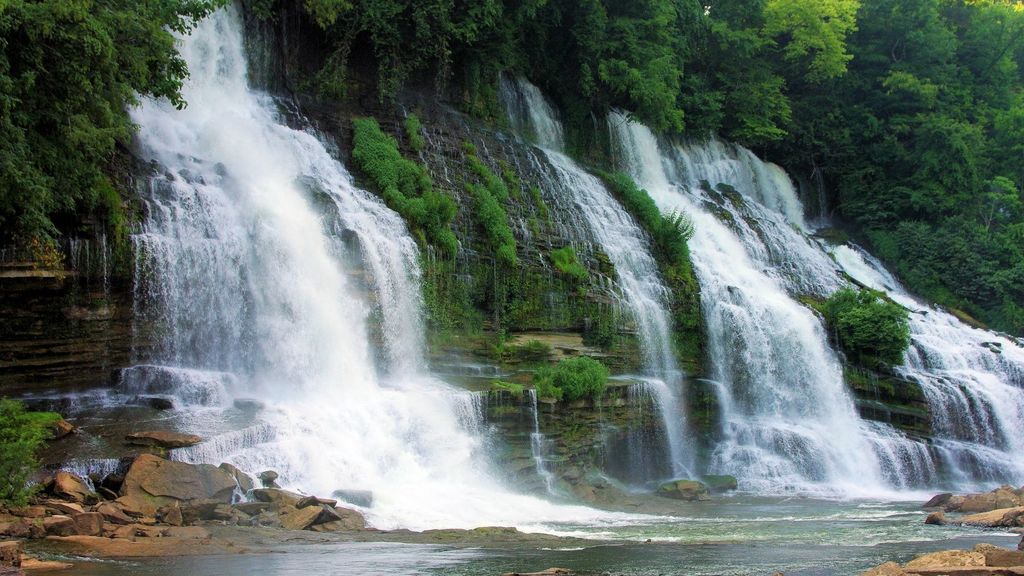
Rock Island State Park is a ruggedly beautiful 883-acre park famous for hiking, exploring, swimming, fishing, and kayaking. It is located at the junction of the Caney Fork, Collins, and Rocky Rivers, on the headwaters of Center Hill Lake.
The Caney Fork Gorge, located just below Great Falls Dam and offering some of the most spectacular vistas of the Eastern Highland Rim, is one of the park's most remarkable attractions.
Twin Falls and Down River Trail is a 2.6-kilometer widely frequented circular trail with a waterfall near Rock Island, Tennessee. It is suitable for hikers of all abilities. The trail is open all year and is popular for hiking, walking, nature visits, and fishing. This trail is also open to dogs, although they must be kept on a leash.
Hiking trails wind their way through Great Falls, a 30-foot cascading waterfall that cascades below the historic 19th-century textile mill. The Caney Fork River Gorge is known for its breathtaking views, deep pools, waterfalls, and winding limestone trails.
Professional kayakers from all over the world frequent the gorge's whitewater parts. A natural sandy beach and boating access are also available at Center Hill Lake. Cabins in Tennessee State Parks are a popular choice for upscale camping. There are two campgrounds as well.
Best time to visit: The perfect time to visit Rock Island State Park is early in the spring or later into the fall.
Distance and driving time from Nashville: 85 miles, 1 hour and 39-minute drive from Nashville
8. Franklin
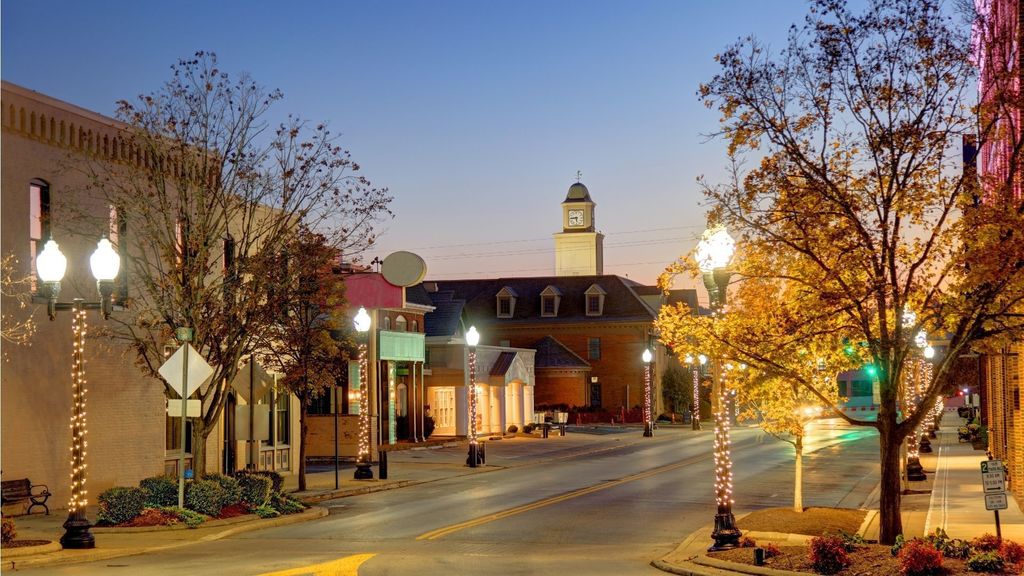
Franklin is recognized for its thriving music culture, exciting festivals, and historic main street. With a population of approximately 70,000 people, it is Tennessee's eighth-largest city.
Franklin is home to a number of major institutions, as well as a number of large industries and notable entertainment venues.
Antique shops, fashion boutiques, art galleries, historic residences, entertainment venues, and award-winning restaurants abound in Franklin's 16-block Downtown Center.
The Downtown Franklin Association is also in charge of the area's well-known festivals. The Mainstreet Brewfest, Main Street Festival, Tour of Homes, and Pumpkinfest are just a few of the annual events that Franklin locals and visitors alike love.
The Lotz House Museum honors Johann Albert Lotz, a classically educated woodworker from Germany who emigrated to Franklin in the mid-nineteenth century. Lotz, who was known for his excellent ability as a carpenter and piano maker, turned his home into a showroom for his valued inventions. He also used his talents to build magnificent furniture, some of which can still be found in homes today.
Nashville mayor Randal McGavock designed and erected the enormous Carnton Plantation in 1826. Because of its proximity to the Battle of Franklin, a five-hour battle that resulted in approximately 10,000 men being dead, injured, or missing, the home has a rich history. For Confederate forces in the area, the Carnton Plantation became the largest field hospital.
The Franklin Farmers Market was founded in 2002 by eight local farmers who made it their mission to maintain Tennessee's magnificent farmlands. Nearly 80 farmers in and around Franklin currently sell food and commodities at the market.
Best time to visit: The best times to visit Franklin are July 23rd to October 14th.
Distance and driving time from Nashville: 21.5 miles, 38-minute drive from Nashville
9. Old Stone Fort State Park
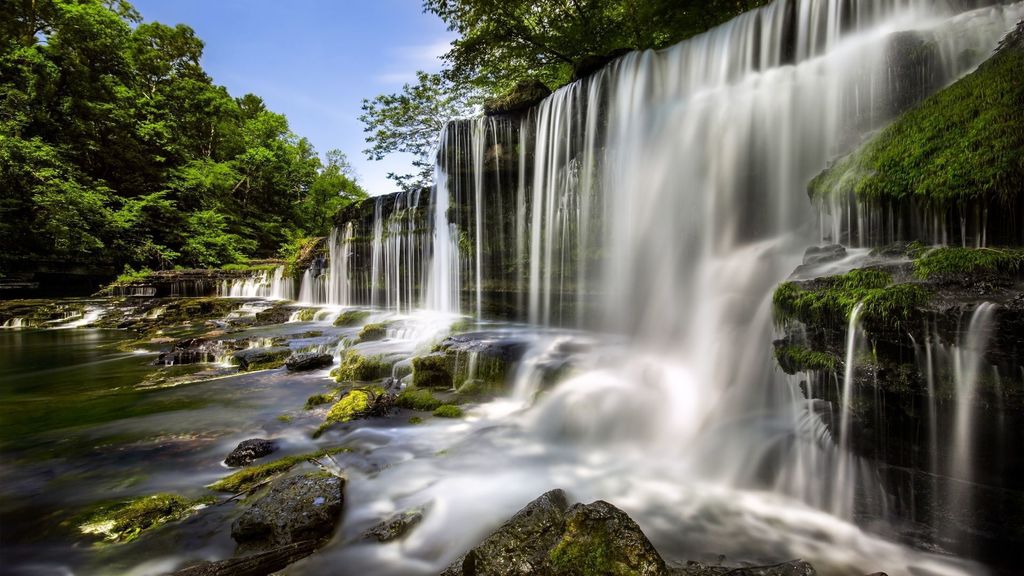
The Old Stone Fort was constructed between 1,500 and 2,000 years ago, during the Middle Woodland Period. For roughly 500 years, Native Americans used this area consistently before abandoning it. When European settlers arrived, it was unclear what the place had been used for, therefore it was mistakenly called a fort. The state of Tennessee bought 400 acres of the Chumbley estate in 1966 to create the Old Stone Fort State Archaeological Park.
This park offers a wide range of activities for visitors to enjoy, making it a perfect choice for a day trip. The primary hiking track follows the wall of Old Stone Fort, which was formerly a ceremonial gathering site for Native Americans. The trail winds through stunning scenery, including the fort's original entrance, which was built to face the exact location on the horizon where the sun rises during the summer solstice. This trail has twelve informative panels that teach visitors about the Old Stone Fort while also allowing them to appreciate the area's beautiful waterfalls.
The Old Stone Fort draws history buffs from all around the world. The museum at the park features prehistoric Native American reproductions, as well as dioramas and photographs. The exhibitions cover ideas about the enclosure's architects, archaeological digs at the site, and the culture of the enclosure's builders.
A small theater is also available for seeing an introductory film, other videos, and group presentations. The museum also houses the park office, welcome center, and gift store.
The campground at Old Stone Fort State Historic Park was upgraded and re-opened in Fall 2020. The construction of a bathhouse and upgrades to the electrical system are among the most recent additions. There are 50 campsites available, each with water and electrical hookups, grills, picnic tables, and hard-surface pads that may accommodate a vehicle up to 50 feet in length.
Best time to visit: The best time to visit Old Stone Fort State Park is last Summer and early Spring.
Distance and driving time from Nashville: 64 miles, 1 hour and 19-minute drive from Nashville
10. Rock City Gardens

You may travel to the Rock City Gardens, which are only about six miles from downtown Chattanooga, and experience stunning vistas of seven states all around you. The Rock City Gardens are a spectacular natural wonder made up of gigantic prehistoric rock formations that house over 400 native species.
Rock City Gardens is a 4100-foot walking trail located near the Georgia-Tennessee border at the summit of Lookout Mountain. The Enchanted Trail combines nature with eccentric attractions, and you'll see spectacular waterfalls, geological wonders, floral gardens, art displays, caves, crevices, towering boulders, mossy forests, and mythological creatures as you travel through this fairytale-like environment.
The Needle's Eye is one of the first challenges you'll face on the mountaintop trek. Its name is derived from its resemblance to the threading of a needle. To continue on the pathway, squeeze through the tight fissure and emerge on the other side of the massive, twin rocks that block your way.
You'll have to cross the Swing-a-Long Bridge to get to the waterfall. This swaying, swaying suspension bridge stretches nearly 200 feet and sways with every step.
The 90-foot-tall High Falls cascade offers stunning vistas whether you go for a summer climb, a winter trip, or something in between. It's one of my all-time favorite waterfalls. It is, without a doubt, one of the most memorable aspects of any visit to Rock City Gardens.
Lover's Leap is the most recognized sight at Rock City Gardens, located immediately at High Falls on a spit of rock protruding out from the edge of Lookout Mountain.
Best time to visit: Autumn is a great time to visit Rock City Gardens.
Distance and driving time from Nashville: 134 miles, 2 hour and 28-minute drive from Nashville
11. Chattanooga

Chattanooga, Tennessee's fourth-largest city, is a fun weekend getaway with gorgeous parks, historic attractions, good museums, motels, wedding venues, and restaurants.
Tennessee Riverpark is one of Chattanooga's most popular parks, especially during the hot summer months. It begins at the Chickamauga Dam and continues for 10 miles along the Tennessee River until it reaches Chattanooga's downtown area. It provides limitless chances for a variety of activities or simply taking in the scenery of the river.
Lookout Mountain is a ridge that runs along Tennessee's southern border and is one of the greatest things to do in Chattanooga. It has a multitude of attractions that showcase the mountain's outstanding natural beauty as well as breathtaking views of the Chattanooga Valley.
The Tennessee Aquarium is home to a variety of creatures that fascinate visitors of all ages, including Volkswagen-size catfish, gigantic freshwater stingrays, the powerful Arapaima, and bizarre-looking Wallago Catfish, as well as electrifying jellyfish and cheerful, frolicking otters. The aquarium's main focus is above and underwater life in Tennessee, which contains some of the country's most diverse freshwater fauna, with over 320 fish species.
The Walnut St. Bridge connects the north side of the Tennessee River to downtown Chattanooga and is the world's longest pedestrian bridge. It is a popular weekend destination for both locals and visitors to Chattanooga.
Best time to visit: The fall season, from September to November, is the best time to visit Chattanooga. The end of the summer peak season brings fewer visitors and lower temperatures of 40 to 80 degrees. However, the best reason to visit Chattanooga in the fall is to see the vibrant leaves.
Distance and driving time from Nashville: 134 miles, 2 hour and 28-minute drive from Nashville
12. Fall Creek Falls State Park
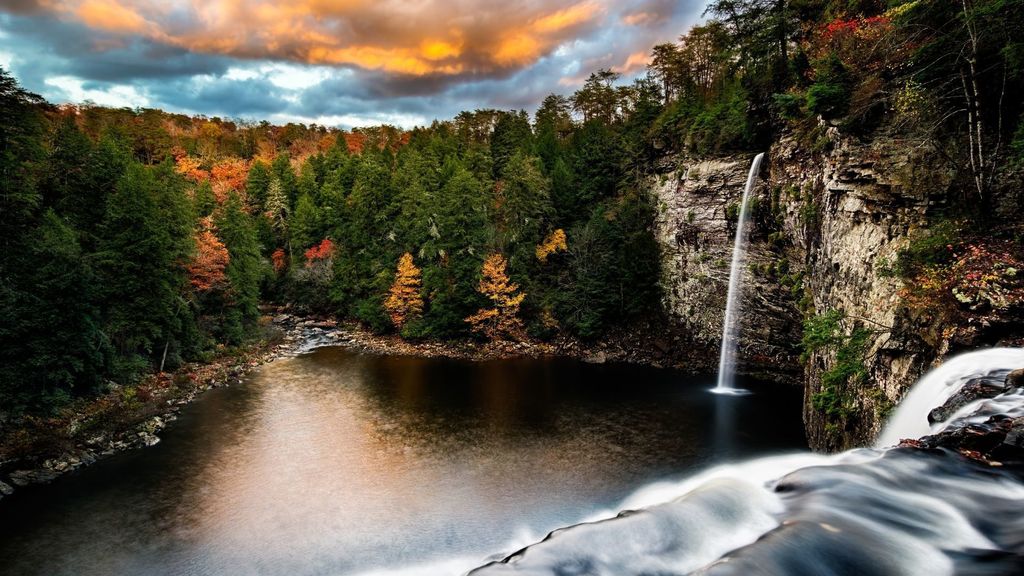
Fall Creek Falls State Park lives up to its name, a perfect place for a day trip from Nashville.
Five waterfalls stream down the Cumberland Plateau's slopes within the park's 20,000-plus acres. Fall Creek Falls has a vertical drop of 256 feet, making it one of the highest in the Eastern United States.
The plunge pool is shared by Fall Creek Falls and the 250-foot Coon Creek Falls. Cane Creek Falls lowers 85 feet and Rockhouse Falls drops 125 feet. Piney Creek Falls plunges 40 feet into the 45-foot Cane Creek Cascade.
The park offers a lovely and well-developed trail system. When you first arrive at the park, take a stroll along the 2.6-mile Paw Paw Trail. You'll gain a better understanding of the park's layout and be able to appreciate the views from Fall Creek Falls and Cane Creek Gorge.
Hike the 1.1-mile Cane Creek Gorge Trail by joining the Woodland Trail at the Visitor Center. A swinging bridge connects the Woodland Trail to the Cane Creek Cascades. The Cane Creek Overlook, Cane Creek Gorge Overlook, and Fall Creek Falls Overlook are all part of the gorge route.
Do you want to take your cycling talents to the next level? Try the bike routes at Fall Creek Falls. The Upper Loop Trail is a great place to start. You'll be challenged by the twisty single-track sections. Do you want to go on an adventure? The Chinquapin Ridge Mountain Bike Trail connects the park's most isolated areas.
Row or troll on Fall Creek Falls Lake and in the creeks. Bring your canoe or kayak and relax while taking in the sights. Alternatively, you can rent a boat for a day or a week. The lake is cradled by a virgin forest.
Fall Creek Falls Lake, with its 345 acres, has produced two state records: channel catfish and bluegill. The state fills Cane Creek with trout in the spring, early summer, and fall. The greatest times to go fishing are in the spring and October. Anglers aged 13 and up must have a fishing license.
Take a refreshing swim during the hot summer months. The campground is close to Fall Creek Falls' bathing area, which includes a small beach. From a rock formation, jump into the water. At its deepest point, the water is seven feet deep, and at its shallowest point, it is three feet deep.
Best time to visit: The best time to visit Fall Creek Falls is in the spring, between March and April (skip Spring Break), and in the fall, between late August and mid-November.
Distance and driving time from Nashville: 129 miles, 2 hours and 9-minute drive from Nashville
13. Cedars of Lebanon State Park
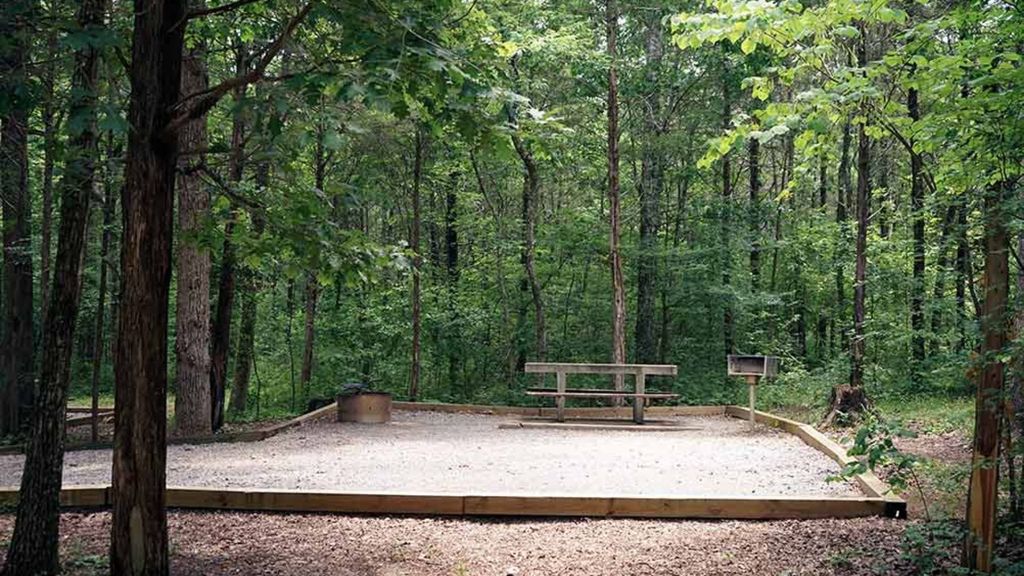
Cedars of Lebanon State Park is part of Cedars of Lebanon State Forest, which is located in Wilson County. The park is named after the eastern red cedar trees that grow throughout the area, reminding early American settlers of the famous Biblical cedar woods that once grew throughout Mount Lebanon.
Cedar glades, a unique type of habitat that has adapted to the thin (or nonexistent) soil layers that are common in the eastern Central Basin, can be found in Cedars of Lebanon State Forest. Red cedar trees, a species of a juniper tree that can thrive in soil layers too thin to support most large woody plants, usually flank these glades.
The Sadie Ford Heritage Farm and Cultural Art Center is located on 73.3 acres just across from the Cedars of Lebanon State Park entrance and represents a cultural landscape with excellent historic integrity. The house and outbuildings, which include a milking barn, cattle barn, and corn crib, are typical of a functioning farm from the early to mid-twentieth century.
Hiking trails spanning 10 kilometers go through the woods and glades. Hiking routes are available all year. Throughout the park, visitors can commonly see foxes, deer, and turkey. A rectangular colored blaze-mark is located on trees along the trail for each trail. Please keep in mind the color of the blaze mark on the trail you are on. For your own safety, remember to stay on the trail.
The 1,139-acre park has 117 campsites with picnic tables and grills, as well as power and water hookups, as well as 30 tent and pop-up campsites.
Best time to visit: The best time to visit Cedars of Lebanon State Park is last Summer and early Spring.
Distance and driving time from Nashville: 32.5 miles, 36-minute drive from Nashville
14. South Cumberland State Park

South Cumberland State Park is located within four different Tennessee counties: Grundy, Franklin, Marion, and Sequatchie. The park has a total area of 30,845 acres, divided into nine distinct regions, and offers some of the best hiking and backcountry camping in the region.
The Fiery Gizzard Trail connects the Grundy Forest and Foster Falls and is 12.5 miles long. Hikers can see stunning rock formations, gushing streams, waterfalls, rugged gorges, panoramic views, and lush woodlands while observing nature. Backpacker magazine named this trail one of the top 25 in the country, and it is not to be missed!
The park's Savage Gulf and Stone Door regions have around 55 miles of hiking trails that lead to breathtaking panoramas, waterfalls, and historical sites like the Stage Coach Road. The Great Stone Door is a dramatic cliff line that rises over the Savage Gulf. As the hiker explores the various surroundings of the top of the plateau and the deep gulf, many of the pathways are ideal for wildflower hunting.
Buggytop is a spectacular wild cave that may be reached via a two-mile climb from the parking lot to the cave entrance. If you've never been to Buggytop before, it's a good idea to go on a ranger-led cave tour to get a feel for the place. From May 1 to August 31, the cave is open to the public.
Visit the Sewanee Natural Bridge, a stunning sandstone arch that overlooks Lost Cove and is a short stroll from the parking lot. It is a lovely sandstone arch.
Swimming, picnicking, fishing, hiking, and a view of 19th-century coke ovens are all available at Grundy Lakes, a day-use park near Tracy City.
Best time to visit: The best time to visit Cedars of Lebanon State Park is last Spring and Summer when the Buggytop cave is from May 1 to August 31.
Distance and driving time from Nashville: 91.5 miles, 1 hour and 29-minute drive from Nashville
15. McMinnville, TN
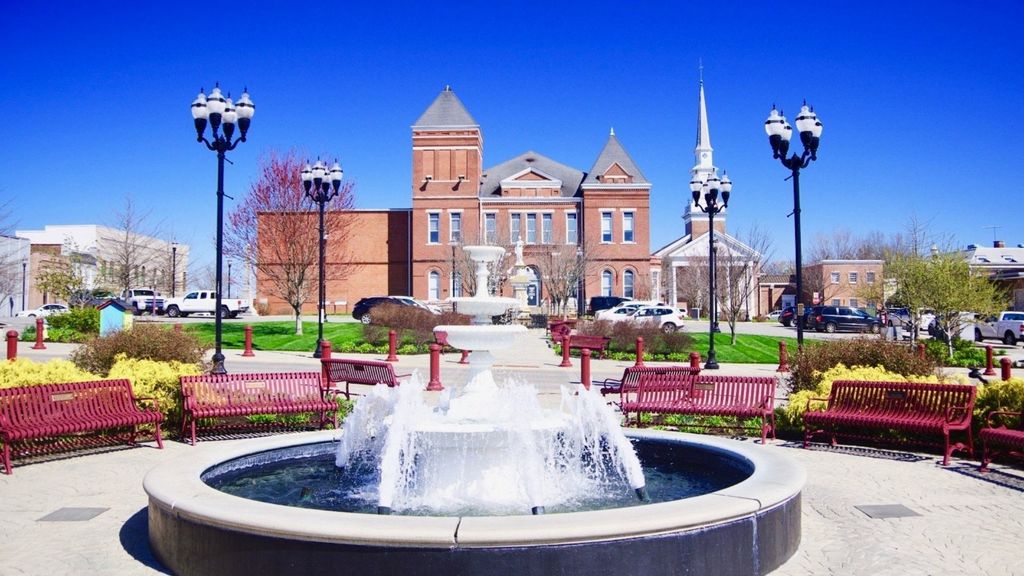
If you're looking for a weekend getaway or a vacation spot that is off the beaten path, look no further than McMinnville, Tennessee.
McMinnville is about exactly midway between Nashville and Chattanooga. Warren County, Tennessee's county seat is McMinnville. Warren County was established in 1807 and named for Major General Joseph Warren, an American Revolutionary War soldier.
Today, Warren County is known as the World's Nursery (Plant) Capital. Warren County is a landscaping hobbyist's dream, with hundreds of nurseries offering both wholesale and retail shopping. Warren County has a lot more to offer than just trees and bushes!
Jesse Coffee built the oldest extant mansion in McMinnville in 1825, and it was notable for its external brick construction at the time. Dr. Thomas Black and his family-owned and occupied the Black House, which is located on the southeast corner of Main and High streets in the downtown commercial district, and gave it its name.
With the establishment of attractions like the Brady-Hughes-Beasley Photographic Archives and Museum and the Warren County Heritage Center and Museum, as well as restaurants like Collins River BBQ and Topz Frozen Yogurt and Metro Deli, the Mainstreet McMinnville initiative has rejuvenated downtown.
Visitors are also welcome to attend the Main Street Live events (outside concerts) and the Farmer's Market during the spring, summer, and fall months.
Best time to visit: The best time to visit McMinnville in Tennessee is from April until October when you will have a pleasant or warm temperature and limited rainfall.
Distance and driving time from Nashville: 76 miles, 1 hour and 24-minute drive from Nashville
16. Jack Daniel Distillery
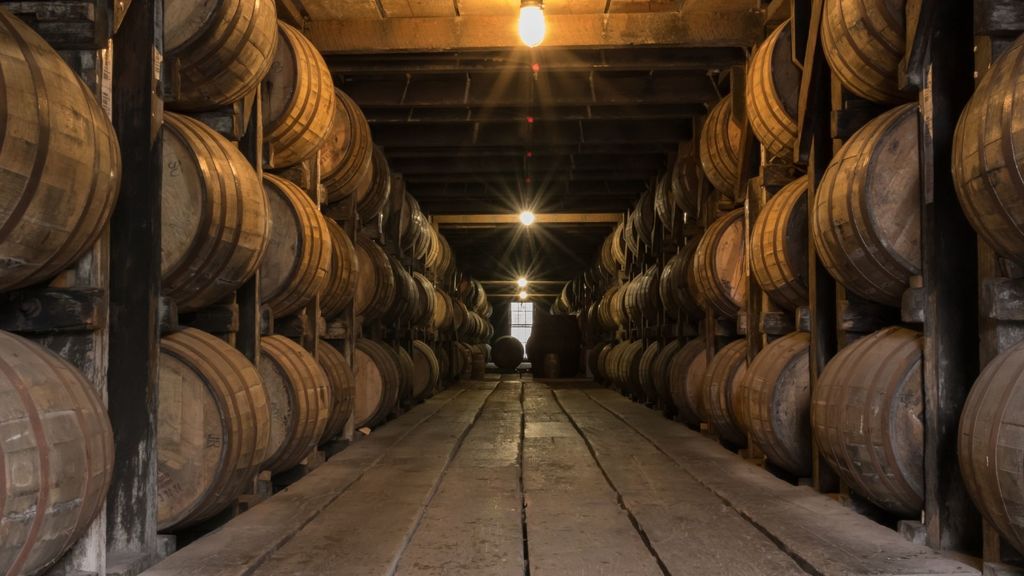
The Jack Daniel Distillery in Lynchburg was established in 1866 by master distiller Jack Daniels. It was the first distillery in the United States to be registered. The distillery was conveniently positioned near Cave Spring Hollow's mineral waters, which were critical for whiskey quality since the limestone from the surrounding rock eliminated iron from the water.
The distillery has grown to be the world's best-selling American whiskey, with more than 1.9 million barrels of whiskey being aged in dozens of barrel houses on Lynchburg's hilltops until they achieve the needed quality. Surprisingly, in Jack Daniel's home county of Moore, which is a dry county, no whiskey is available in stores.
Millions of people visit the distillery now, and the visitor center, which opened in 2000, has a gift store and mementos relating to the distillery's history. The tours take place outside and include walking and stair climbing. For people who might have trouble partaking in the tour, Jack Daniel's has designed an alternative distillery tour. For those who are short on time or don't want to climb stairs, there is a bus tour option. Walking shoes are recommended for individuals who choose the other tour alternatives.
Best time to visit: The Jack Daniel Distillery is a great destination any time of year.
Distance and driving time from Nashville: 73.6 miles, 1 hour and 28-minute drive from Nashville
17. Long Hunter State Park

Long Hunter State Park, established in 1974, spans 2,600 acres and is divided into four sections: Couchville, Baker's Grove, Bryant Grove, and Sellars Farm.
Fishing and hiking are among the activities available at Long Hunter State Park, which also has two boat launch ramps on J. A group camp, a backcountry campsite, a meeting facility, and a tourist center are all located at Percy Priest Lake.
Twenty-five miles of easy to difficult hiking routes, ranging in length from one to six miles, traverse scenery ranging from cedar glades to oak-hickory woodland and cliff overlooks. The two-mile paved Lake Trail in Couchville is ideal for strollers and wheelchairs. Each park unit has a map available. Trails must be excited by dusk for day hikers.
In the approved swimming beach area at Bryant Grove, unsupervised swimming is permitted. Swimming is forbidden at Couchville Lake and near boat ramps. Visitors should exercise caution when swimming in the lake since the bottom is dangerous. You must swim at your own risk.
J. Percy Priest Lake, a 14,000-acre reservoir that surrounds the park, is a popular spot for fishing, waterskiing, wave runners, pontoons, and paddle sports in middle Tennessee. During the summer, hire Jon boats and canoes to enjoy Couchville Lake's serene 110 acres. The boat pier is available seasonally, whereas Couchville Lake is open all year.
Best time to visit: The best time to visit Long Hunter State Park is last Summer and early Spring.
Distance and driving time from Nashville: 24 miles, 36-minute drive from Nashville
18. Carter House and the Carnton Plantation

This simple farmhouse has become a synonym for the civil war when it was hit in a desperate battle on 30 November 1864. The terrible battle between defending Union troops and advancing Confederates took place in this site later known as the Franklin Battle.
The mansion is noteworthy for its original and period furniture, as well as a museum of Civil War antiques that help tell the story of the bloody struggle.
Carnton Plantation, which was built in 1826 by Randal McGavock, a former mayor of Nashville, was used as a field hospital during the war. Hundreds of Confederate troops, including four generals who would die from their wounds, were treated here (tour guides will even point out bloodstains on the porch where they and other soldiers were placed before burial).
More than 1,500 Confederate soldiers were interred in an adjoining two-acre plot of land, which is now known as the McGavock Confederate Cemetery, after the battle. Expect to spend at least an hour touring each location, plus an hour or more exploring the cemetery, grounds, and outbuildings. There are guided tours available that explain the significance of these two structures in a horrific conflict.
Distance and driving time from Nashville: 22 miles, 34-minute drive from Nashville
19. Huntsville
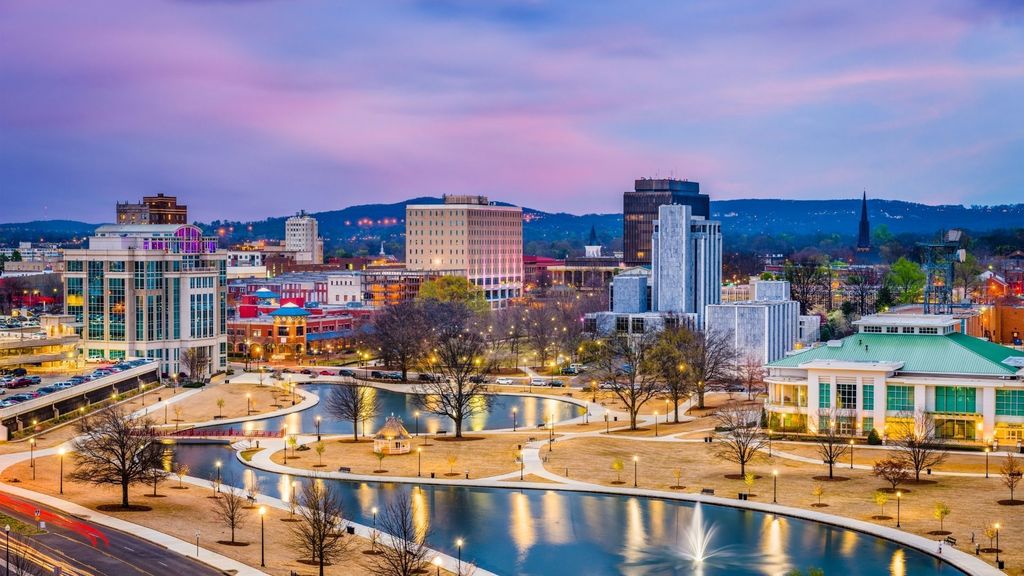
Huntsville, Alabama, is a city rich in historical and cultural significance and home to some of the country's best natural wonders, despite the fact that you may have never heard of it.
Visit one of Huntsville's numerous museums to learn about the city's history, explore the gorgeous countryside, partake in a range of shopping and culinary delights, or participate in an activity that is guaranteed to please you as a tourist.
In the State's largest antebellum district, Twickenham Historic District, take in the sights and experience some of Alabama's most exquisite buildings. Make a point of visiting the Weeden House Museum. It's the oldest Alabama mansion open to the public, dating from 1819, and it offers guided walking tours.
Huntsville Botanical Garden hosts yearly botanical exhibitions, seasonal festivals, and adult and children's educational programs. Explore the many gardens and pathways to see the natural treasures on display. The nature center is home to the country's largest open-air butterfly house, as well as multiple waterfalls and ponds, and it provides habitat for both vegetation and wildlife. The renowned Garden Railway, vegetable and four-season gardens, and bird walk will provide a fun and varied experience.
Learn about the origins of America's space program at the US Space and Rocket Centre.
Best time to visit: The best times of year to visit Huntsville for warm-weather activities are from early May to late June and from early August to early October.
Distance and driving time from Nashville: 111 miles, 2 hour and 6-minute drive from Nashville
20. Natchez Trace Parkway

The Natchez Trace Parkway runs through three states and is a 444-mile recreational and beautiful journey.
The "Old Natchez Trace," a historic transit corridor utilized by American Indians, "Kaintucks," European settlers, slave traders, troops, and future presidents, is roughly followed. Along the parkway now, visitors can enjoy not just a picturesque drive but also hiking, biking, horseback riding, and camping.
More than a picturesque drive, the Natchez Trace Parkway is a must-see destination. Explore the numerous leisure possibilities available along the road. Camping, biking, walking on the Chisha Foka Multi-Use Trail, and Ranger-led programs are among the most popular activities, although other options including hiking, horseback riding, and fishing. Throughout the year, there are unique events that include demonstrations and showcase many facets of American culture.
Jackson Falls (milepost 404.7) and Fall Hollow (milepost 391.9) in Tennessee are two of the most breathtaking sights along the Natchez Trace Parkway. Despite the fact that both falls are equally beautiful, each one delivers a unique experience. Both offer stunning views as well as opportunities to see wildflowers, birds, and other animals.
Three campgrounds are operated by the Natchez Trace Parkway. Meriwether Lewis is located at Milepost 385.9, Jeff Busby is located at Milepost 193.1, and Rocky Springs is located at Milepost 54. The campgrounds are free, primitive, and first come, first served. Throughout the year, the maximum stay at those campgrounds is 14 days.
Best time to visit: The Natchez Trace Parkway is open all year, but the finest seasons to visit are spring and fall. You'll notice a lot of wildflowers and trees flowering along the journey in April and May.
Distance and driving time from Nashville: 237 miles, 4 hour and 15-minute drive from Nashville
Other popular day trips in the United States!



















